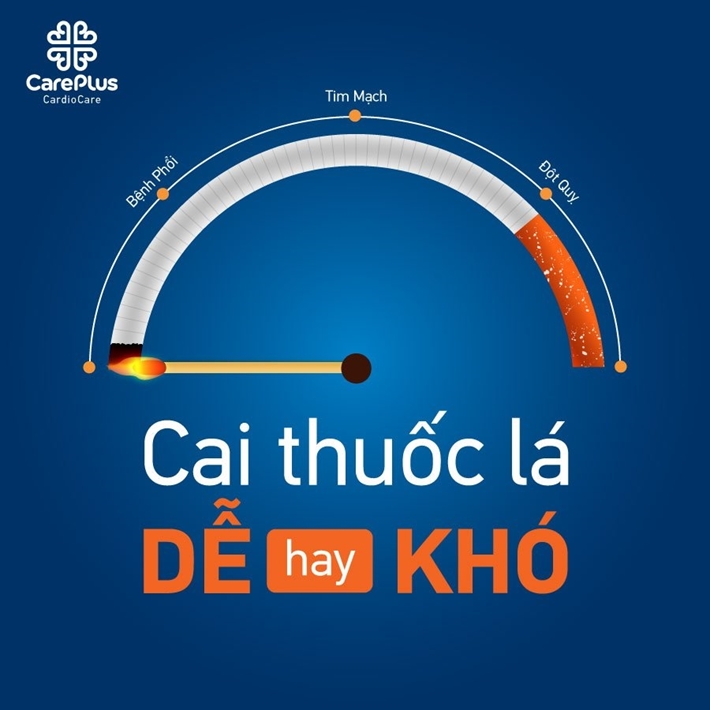A disease more dangerous than Covid-19
75% of smokers want to quit. On average, a successful quitter needs… 30 attempts to stop. Why is smoking so tricky? Because tobacco addiction is not simply a habit, a hobby, but a well-classified disease (ICD code F17).

6/14/2021 4:44:26 PM
- Every day, that pandemic claimed the lives of about 100 Vietnamese people
- This pandemic's ability to spread is tremendous; an estimated 20 million people in Vietnam carry it, an additional 30 million people (mainly women and children) are indirectly affected, although they never wanted.
- Its toxicity is extremely formidable, containing more than 7000 highly toxic substances that affect almost every organ in the body, such as the heart, lungs, kidneys, brain, bladder, etc., causes over 25 serious diseases; many diseases currently have no cure.
- This epidemic also leaves consequences for future generations, such as causing infertility, malformations, premature birth, etc.
- This epidemic especially favours cardiovascular patients: accelerating atherosclerosis turns the coronary arteries of a 20-30-year-old person into that of a 60-70-year-old. It reduces the effectiveness of drugs for high blood pressure and diabetes, can clog a new Made-in-USA coronary stent, cause occlusion of blood vessels in the legs, leading to disability, even increasing the risk. Sudden death.
It's not Covid-19, nor is it the new Flu of 2021, but smoking. One cigarette is smoked now, the effects can last up to 15 years later, but start to quit smoking now, the body will begin the healing process. So quit smoking now, friends!
1. Is quitting smoking EASY OR HARD?
75% of smokers want to quit. On average, a successful quitter needs… 30 attempts to stop. Why is smoking so tricky? Because tobacco addiction is not simply a habit, a hobby, but a well-classified disease (ICD code F17).
When you stop smoking within 24 hours, your body will eliminate the addictive nicotine in the blood. The withdrawal will have "mild" symptoms such as headaches, nausea, loss of appetite - not too difficult to overcome.
48-72 hours is when nicotine thirst peaks: people are restless, irritable, irritable grumpy, difficult to concentrate. The "senior" of smoking and the greater the amount smoked, the longer this period is, but only about 1-2 weeks. This is when the quitter needs proper support to overcome because just past this milestone, the success rate of quitting is over 90%!
After three weeks, withdrawal symptoms should subside, and the quitter will feel better in the "new normal". Thus, the key to smoking cessation is timely support to help the smokers get past the crucial first few weeks. Tobacco is a medical problem that requires a medical approach: the companionship of family and doctors, medication to help quit smoking, and a reasonable lifestyle. Studies have shown that proper counselling and appropriate use of smoking cessation medications double the success rate of quitting.
2. HOW will quitting smoking change your body?
- 20 - 30 minutes later: Blood pressure and pulse drop, hands and feet start to warm
- 8 hours later: CO concentration in the blood decreases while the amount of O2 increases
- 48 hours later: The sense of taste is improved
- 72 hours later: The bronchi are relaxed
- 2 weeks - 3 months later: Circulation, lung function, and endurance improve
- 1 - 9 months later: Cough and sinus congestion decrease; the lungs can clear mucus, keep it clean and reduce inflammation; Improved overall health
- 1 year later: Heart disease rate drops compared to when smoking
- 5 years later: The stroke rate is the same as that of a non-smoker; the rate of cancer of the mouth, throat, oesophagus and lung dropped to ½; The rate of neck cancer drops to that of a non-smoker
- 10 years later: The risk of neck cancer is half that of a smoker; Pancreatic cancer risk is half that of a non-smoker
- 15 years later: The risk of heart disease is the same as that of a non-smoker; The risk of death is equal to that of a non-smoker